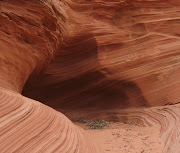
 flows. The molten humpback of a mountain took almost 18,000 years to build the type of power that burst forth from inside the earth. Pompeii became a legend not seen until found by accident 1700 years later in the treacherous year of 1748. During that time, the City of London burned, the Masstricht suffers capture and an area named Civita coughed up a long held secret, intact. King Charles III took possession of the art most deemed to enhance his royal collection, but surprisingly, to me at least, it never left the country remaining on display in the Museo Nazionale in Naples, Italy today. Unfortunately, there was a greedy free for all with everything else not glued down culminating in the indignity of a dump truck maneuver of filling in inconvenient villas. After an excavation, under French and Italian rule alike, lasting from 1748 to 1923, Italy retains command of these ancient artifacts. Many of the people who died were uncovered still holding the expressions of the moment of terror, now part of plaster casts made for exhibitions. Today, the neglected state of Herculaneum and Pompeii further provides embarrassment to the new third times the charm Berlosconi Italian government for it's need to declare a state of emergency for the ruins. (BBC/Discovery Channel)
flows. The molten humpback of a mountain took almost 18,000 years to build the type of power that burst forth from inside the earth. Pompeii became a legend not seen until found by accident 1700 years later in the treacherous year of 1748. During that time, the City of London burned, the Masstricht suffers capture and an area named Civita coughed up a long held secret, intact. King Charles III took possession of the art most deemed to enhance his royal collection, but surprisingly, to me at least, it never left the country remaining on display in the Museo Nazionale in Naples, Italy today. Unfortunately, there was a greedy free for all with everything else not glued down culminating in the indignity of a dump truck maneuver of filling in inconvenient villas. After an excavation, under French and Italian rule alike, lasting from 1748 to 1923, Italy retains command of these ancient artifacts. Many of the people who died were uncovered still holding the expressions of the moment of terror, now part of plaster casts made for exhibitions. Today, the neglected state of Herculaneum and Pompeii further provides embarrassment to the new third times the charm Berlosconi Italian government for it's need to declare a state of emergency for the ruins. (BBC/Discovery Channel)
Lately, Naples has had severe difficulty upholding its benevolent to the arts image what with tens of thousands of tons of trash on curbs for weeks beckoning every"Every year at least 150 sq m (1,600 sq ft) of fresco and plasterwork are lost for lack of maintenance," Antonio Irlando, a regional councillor responsible for artistic heritage, told the Corriere della Sera newspaper.
Ministers intend to appoint a special commissioner to oversee the site, and have earmarked extra funding for it.
According to analysts, the ruins have suffered from lack of investment, mismanagement, litter and looting.
 hungry rat and disgusting
hungry rat and disgusting  maggot to call the rank streets their best infestation resort, ever. Twice in the last six months, Rome has had to deliver an edict to Naples to clean itself up as local control of dumps between citizens, mobsters and government resulted in the streets being replete with waste. Naples, Campania is/was a place of respite, Neapolitan delights like Pizza and usually calm seaside beauty where artists, archaeologists and anthropologists working on uncovering even more of the commune. After deputizing Italian police officers as garbage collectors, Rome now has has had the humiliation to call upon the art world to restore the ruins, again. And that's without factoring in that Mount Vesuvius retains every bit of its power to erupt in terrible magnificence again with an estimated 3,000,000 people now living up close in the volcano's shadow.
maggot to call the rank streets their best infestation resort, ever. Twice in the last six months, Rome has had to deliver an edict to Naples to clean itself up as local control of dumps between citizens, mobsters and government resulted in the streets being replete with waste. Naples, Campania is/was a place of respite, Neapolitan delights like Pizza and usually calm seaside beauty where artists, archaeologists and anthropologists working on uncovering even more of the commune. After deputizing Italian police officers as garbage collectors, Rome now has has had the humiliation to call upon the art world to restore the ruins, again. And that's without factoring in that Mount Vesuvius retains every bit of its power to erupt in terrible magnificence again with an estimated 3,000,000 people now living up close in the volcano's shadow.

 on the United Nations list. UNESCO sites have suffered some catastrophic damages lately, and it is painful to see that it continues, especially as Pompeii the ancient, is one of the most visited tourist sites in the world.
on the United Nations list. UNESCO sites have suffered some catastrophic damages lately, and it is painful to see that it continues, especially as Pompeii the ancient, is one of the most visited tourist sites in the world.Pompeii has been hit by a fall in tourism to the Naples area since the onset of the latest refuse emergency. According to official figures, the number of visitors last month was 13% down on a year earlier. The region as a whole lost more than 20% of its tourism.
Extraordinary commissioners are becoming a favourite device of Silvio Berlusconi's fledgling third government, which has already appointed one ad hoc administrator for the Naples refuse crisis and three more for what the Italian media terms "the gypsy emergency". Andrew Wallace-Hadrill, an archaeologist and director of the British School at Rome, said the key to preserving Pompeii would be a "programme of continuous maintenance."

Joanne Berry uses the power of illustrations of paintings and frescoes and the scope of information found in a city left mostly intact after the volcanic eruption in a most wonderful book, The Complete Pompeii.










No comments:
Post a Comment